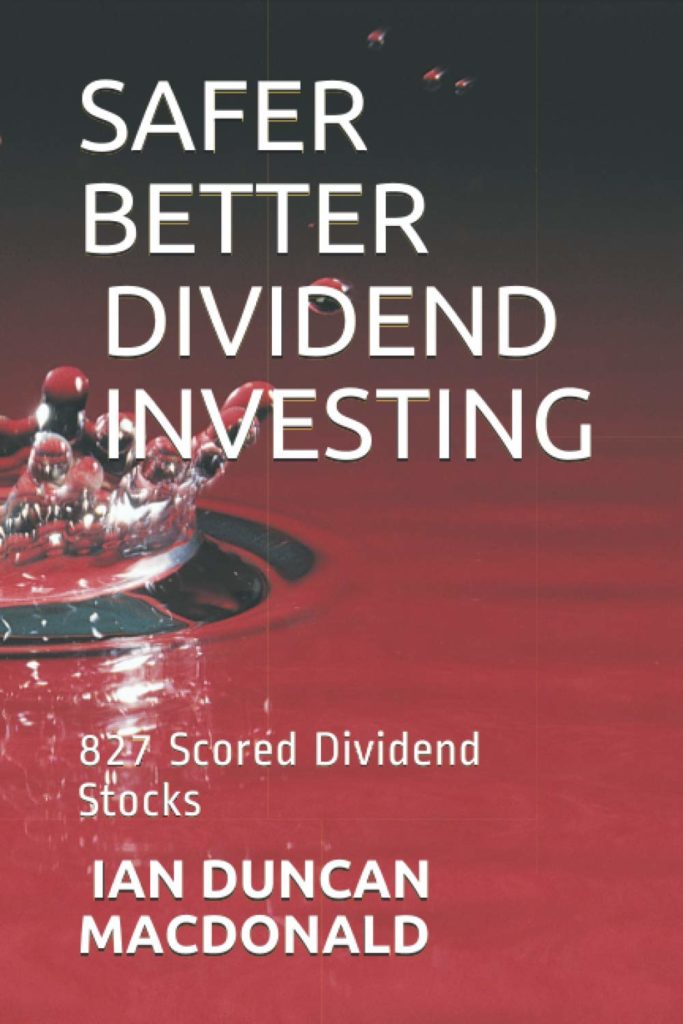Special to the Financial Independence
The “good” dividends of financially strong companies provide a reliable income and increase the odds for an ever-rising share price.
There are 14,982 corporations in North America with common shares for purchase. For a strong, diversified portfolio you need only find 20 corporations whose shares come closest to matching the following “ideal criteria.”
(1) A stock price greater than $100
(2) A stock price that was greater than $100 four years ago
(3) A stock price that is now 99.50% greater than it was 4 years ago
(4) A stock with a book value greater than $100
(5) A current stock price greater than 49.5% of the book value
(6) Five or more analysts rating the stock a “buy”
(7) Five or more analysts rating the stock a “strong buy”
(8) A dividend yield percent between 7.50% and 10.49%.
(9) An operating margin greater than 79.50%
(10) An average daily volume of shares traded greater than 2,000,000
(11) A stock’s price-to-earnings ratio between 0.1x to 5.49x
In 20 years of reviewing thousands of stocks I have never found a stock that met all eleven criteria. Therefore, since the ideal stock does not exist it means you must sort through those 14,982 stocks to find those 20 that come closest to matching the 11 criteria.
To help identify the best dividend stocks, I score stocks using the above 11 criteria (my background was in commercial risk systems with Dun & Bradstreet, Equifax, etc). When the 11 scores are added they have the potential to reach a total of 100. After scoring thousands of stocks the highest score I have ever calculated is 78; the lowest score is 8. I avoid buying stocks scoring under 50.
Why dividends are important in Value investing
The best portfolio candidates emerge when you sort, by descending score, all 628 U.S. common stocks traded on the NYSE and the NASDAQ paying a dividend of 6 % or greater and all 199 Canadian common stocks paying a dividend of 3.5% or greater on the TSX. A scoring system objectively, mathematically applies a derived number to a stock. This number identifies those dividend stocks that will provide the most reliable, generous dividend income with the potential for substantial future share price gain.
Why are dividends so important in value investing? My analysis over 16 years shows that financially strong dividend paying companies pay consistent dividends even during recessions and pandemics. During years such as 2020, an investor can live off their dividend income while waiting for the stock market to rebound. Stock markets have rebounded after every downturn for the past 100 years. Thus, to survive, dividend investors do not need to sell their financially strong stocks at the worst possible time and attempt to time their re-entry into the market. While your portfolio’s share price may dip you still own the same number of shares and 95% of your carefully chosen stocks will continue to pay the same dividends as they have always paid.
Why did so few of the financially strong dividend paying stocks not reduce their dividend payments during the last and the current recession? The executives of such companies have too much to lose if they cut dividends.
At the beginning of each fiscal year, the number of shares the senior executives will receive in their stock option plan are presented. A stock option is an agreement that if the stock were currently trading at $10 a share, in one year from when they were granted, executives would be allowed to purchase their allotted number of shares at that same $10 price, regardless of how high the current price might be. There reward could be substantial.
The executives know, if a company has been paying an annual dividend of fifty cents per month per share to shareholders for years and they cut that dividends many shareholders will sell. This would cause a share price drop which would result in the executives not receiving their stock option bonus.
Dividends are paid from the operating margin. Therefore, every employee working for these executives have been focused to do whatever is necessary to make sure the operating margin never drops. This means pushing for increased sales, cutting expenses to the bone, keeping salary increases to a minimum, reducing employee counts wherever possible, introducing new products, blocking the formation of unions, etc. They are obsessed with seeing that the share price increase steadily every year. This obsession benefits value investors.
 After graduating from McMaster University, with $100 left in his pocket (but no student debt), Ian Duncan MacDonald hitch hiked home to Sudbury to work four months as a labourer in International Nickel’s smelter. In four months, he had saved enough to seek his fortune in the big city.
After graduating from McMaster University, with $100 left in his pocket (but no student debt), Ian Duncan MacDonald hitch hiked home to Sudbury to work four months as a labourer in International Nickel’s smelter. In four months, he had saved enough to seek his fortune in the big city.
In Toronto, he was immediately hired by Dun & Bradstreet as a credit reporter. While he had expected to be a reporter for the rest of his life, D&B had other plans. Within four years, he was General Manager of their Marketing Services Division. Three years later, at the age of 28, he was responsible for the sales, marketing and advertising for all three divisions of the company.
At 32, he left D&B to build Screening Systems International Ltd, for a large conglomerate, which led to his interest in collections. Moving to Creditel of Canada Ltd. he became Senior Vice President. Subsequently bought by Equifax, he remained there until his retirement in 2005. In anticipation of his retirement he incorporated Informus
Inc. to sell his art, his publications and consulting services (www.informus.ca.)
His book “Income and Wealth from Self-Directed Investing” provides a detailed system, plus stock scoring software, which arms someone who has never invested with the knowledge they need to successfully and safely generate income and wealth for the rest of their lives.



I have been a student of exactly what the above book teaches and YES, it works. I am so thankful that I listened and followed Ian Duncan MacDonald’s advice.